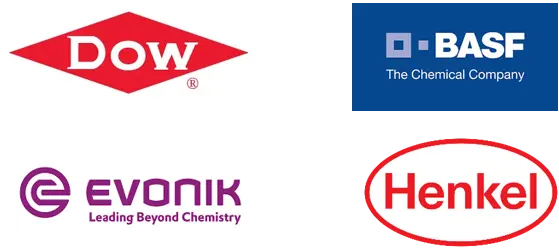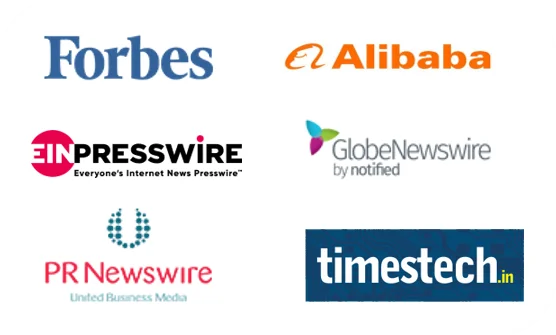Market Overview:
"The global battery recycling market was valued at US$ 29.9 Billion in 2024 and is expected to register a CAGR of 8.8% over the forecast period and reach US$ 63.9 Billion in 2033."
|
Report Attributes |
Details |
|
Base Year |
2024 |
|
Forecast Years |
2025-2033 |
|
Historical Years |
2021-2023 |
|
Global Battery Recycling Market Growth Rate (2025-2033) |
8.8% |
Battery recycling is a solution that aids in addressing environmental concerns and resource scarcity. The process involves reclaiming valuable materials like lithium, cobalt, and nickel from used batteries to reduce fresh raw material mining dependency and resulting pollution. Battery recycling offers dual benefits: ecological preservation and economic gain. Recovered materials can be repurposed for new batteries, decreasing the demand for raw materials. A number of recycling techniques including pyrometallurgical, hydrometallurgical, and mechanical processes are used in the industry. Each method varies in efficiency, environmental impact, and cost.
The global battery recycling market is registering substantially robust revenue growth currently due to expanding battery consumption volumes in electronics, Electric Vehicles (EVs), and for renewable energy storage, among others. Increasing environmental awareness and regulatory pressures are driving demand for efficient recycling processes and services. Advancements in recycling technologies, such as hydrometallurgical and pyrometallurgical processes, enhance resource recovery. Industry initiatives promote responsible disposal and resource conservation. Advantages of recycling also include reduced resource dependence, minimized landfill waste, and decreased environmental pollution. Analysis and insights reveal a competitive landscape with a focus on sustainability, prompting businesses to adopt innovative strategies for a circular economy and greener future.
Battery Recycling Market Trends and Drivers:
Increasing Battery Consumption: Rising demand for batteries in electronics, electric vehicles, and renewable energy storage solutions directly drives the need for battery recycling services, and this is positively impacting revenue growth.
Environmental Regulations: Stringent regulations and policies mandating proper disposal and recycling of batteries drive companies to seek recycling solutions, contributing to revenue growth as compliance becomes a priority.
Advancements in Recycling Technologies: Ongoing research and development of innovative recycling methods, such as hydrometallurgical and pyrometallurgical processes, enhance resource recovery efficiency, attracting businesses looking for sustainable and cost-effective solutions.
Growing Sustainability Awareness: As environmental concerns grow, consumers and industries prioritize sustainable practices, leading to increased demand for battery recycling services that align with eco-friendly initiatives, consequently boosting revenue.
Circular Economy Initiatives: Governments and organizations globally promote adoption of circular economy models, stimulating demand for recycling services and creating new revenue streams by reintegrating valuable materials into the supply chain.
EV Industry Expansion: Rapid growth of the electric vehicle market not only increases battery consumption, but intensifies the need for responsible disposal and recycling, offering significant revenue opportunities for specialized battery recycling companies.
Battery Recycling Market Restraining Factors:
Complex Recycling Processes: Many battery types entail intricate recycling processes due to varying chemistries, designs, and materials, increasing operational complexities and potentially hampering revenue growth.
High Initial Investment: Establishing advanced recycling facilities requires substantial capital investment, deterring potential entrants and limiting revenue growth in the battery recycling market.
Limited Collection Infrastructure: Inadequate collection systems for used batteries hinder the efficient retrieval of recyclable materials, impacting revenue growth by limiting the availability of input materials.
Volatility in Raw Material Prices: Fluctuations in the prices of metals like lithium, cobalt, and nickel affect the economic viability of recycling, influencing revenue growth as market conditions change.
Lack of Public Awareness: Limited awareness among consumers and industries about the importance of battery recycling can result in low participation rates, impeding revenue growth potential.
Competing Disposal Methods: Traditional methods like landfilling and incineration remain cheaper options for battery disposal, posing a challenge to the adoption of recycling practices and potentially hindering revenue growth for recycling companies.
Battery Recycling Market Opportunities:
Advanced Recycling Technologies: Companies can develop and offer innovative recycling technologies that improve efficiency and resource recovery, attracting clients seeking cutting-edge solutions and generating revenue through technology licensing and services.
Material Extraction and Sales: Extracted valuable materials like lithium, cobalt, and nickel can be sold to battery manufacturers and other industries, creating a consistent revenue stream from the recovered resources.
End-of-Life Services for EV Manufacturers: Collaborating with electric vehicle manufacturers to provide end-of-life battery management services offers a lucrative opportunity to capitalize on the expanding electric vehicle market while ensuring proper recycling.
Consulting and Compliance Services: Companies can offer consulting services to help businesses navigate complex battery recycling regulations and ensure compliance, generating revenue through advisory and assessment services.
Collection and Logistics Solutions: Developing efficient collection and logistics systems for used batteries can create revenue streams through partnerships with municipalities, businesses, and electronic retailers, offering a seamless channel for recycling.
Circular Economy Partnerships: Forming partnerships with battery and electronics manufacturers to establish closed-loop supply chains for materials can lead to revenue
Battery Recycling Market Segmentation:
By Battery Chemistry:
- Lead-Acid Batteries
- Lithium-Ion Batteries
- Nickel-Cadmium Batteries
- Nickel-Metal Hydride Batteries
- Others
By End-Use Industry:
- Automotive
- Consumer Electronics
- Industrial
- Energy Storage
- Others
By Recycling Process:
- Pyrometallurgical Recycling
- Hydrometallurgical Recycling
- Mechanical Recycling
- Direct Reuse
- Others
By Application:
- Lead Recycling
- Lithium Recycling
- Nickel Recycling
- Cobalt Recycling
- Others
By Type of Service:
- Collection & Transportation
- Sorting & Disassembly
- Resource Recovery
- Disposal
- Others
Battery Recycling Market, By Region:
North America:
- United States
- Canada
Europe:
- Germany
- The U.K.
- France
- Spain
- Italy
- Russia
- Poland
- BENELUX
- NORDIC
- Rest of Europe
Asia Pacific:
- China
- Japan
- India
- South Korea
- ASEAN
- Australia & New Zealand
- Rest of Asia Pacific
Latin America:
- Brazil
- Mexico
- Argentina
Middle East & Africa:
- Saudi Arabia
- South Africa
- United Arab Emirates
- Israel
Regional analysis of the global battery recycling market highlights key regions and countries driving the industry's potential. North America market revenue growth is driven by stringent regulations and EV adoption, and registers high demand for recycling services. Europe's focus on circular economy principles and sustainable practices fosters significant growth. Asia-Pacific, led by China and Japan, capitalizes on its high volume battery production and aims for responsible disposal. Developing regions like Latin America and Africa exhibit growing potential due to increasing battery consumption. Preferences lean towards companies offering advanced recycling technologies, aligning with sustainability trends and driving product sales in regions emphasizing environmental developments.
Leading Companies in Battery Recycling Market & Competitive Landscape:
The global battery recycling market showcases a dynamic competitive landscape shaped by a mix of established industry players and innovative newcomers. As environmental concerns intensify and the demand for sustainable practices grows, competition is centered around advanced recycling technologies, efficient processes, and responsible resource recovery. Leading battery recycling manufacturers have carved distinct positions within this landscape, often distinguished by their technological prowess, global reach, and commitment to environmental stewardship.
Some key players include, Umicore N.V. which stands out as a pioneer in sustainable battery recycling solutions. Renowned for its cutting-edge technologies, Umicore has successfully positioned itself as a front-runner in recycling lithium-ion and other types of batteries. Its strategic partnerships with electric vehicle manufacturers and continuous investments in research and development underscore its commitment to innovation.
Retriev Technologies Inc. is another player recognized for its comprehensive battery recycling services across various sectors. With a strong focus on environmental compliance and efficient resource recovery, Retriev Technologies maintains a significant presence in the market.
Li-Cycle Corp. has gained attention for its unique approach to lithium-ion battery recycling, utilizing a proprietary Spoke & Hub technology that maximizes material recovery. This innovative methodology has elevated Li-Cycle's profile as a forward-thinking disruptor in the industry.
Additionally, Aqua Metals Inc. has gained recognition for its novel aqua-refining technology, which aims to revolutionize lead-acid battery recycling. The company's environmentally friendly process sets it apart as a leader in the lead-acid battery recycling segment.
Collectively, these companies represent diverse solutions across the battery recycling value chain, demonstrating a strong commitment to sustainability and circular economy principles. Their innovations not only address the growing concerns of resource scarcity and environmental impact, but also dictate the scenario in the industry as a whole to elevate practices.
However, the competitive landscape continues to evolve as new entrants bring fresh perspectives and innovative technologies. As governments and industries worldwide emphasize responsible battery disposal and resource recovery, the competitive edge will belong to companies that can efficiently navigate the complex landscape of regulations, technological advancements, and sustainable business practices.
Company List:
- Umicore N.V.
- Retriev Technologies Inc.
- Li-Cycle Corp.
- Aqua Metals Inc.
- Battery Solutions LLC
- Gopher Resource LLC
- RSR Corporation
- Gravita India Limited
- Raw Materials Company Inc.
- Exide Technologies
- Recupyl SAS
- Johnson Controls International plc (Clarios)
- GEM Co., Ltd.
- Ecobat Technologies Ltd.
- EnerSys
Research Scope
|
Report Metric |
Report Details |
|
Battery Recycling Market size available for the years |
2021-2033 |
|
Base Year |
2024 |
|
Forecast Period |
2025-2033 |
|
Compound Annual Growth Rate (CAGR) |
8.8% |
|
Segment covered |
Battery Chemistry: Lead-Acid Batteries, Lithium-Ion Batteries, Nickel-Cadmium Batteries, Nickel-Metal Hydride Batteries, Others End-Use Industry: Automotive, Consumer Electronics, Industrial, Energy Storage, Others Recycling Process: Pyrometallurgical Recycling, Hydrometallurgical Recycling, Mechanical Recycling, Direct Reuse, Others Application: Lead Recycling, Lithium Recycling, Nickel Recycling, Cobalt Recycling, Others Type of Service: Collection & Transportation, Sorting & Disassembly, Resource Recovery, Disposal, Others |
|
Regions Covered |
North America: The U.S. & Canada Latin America: Brazil, Mexico, Argentina, & Rest of Latin America Asia Pacific: China, India, Japan, Australia & New Zealand, ASEAN, & Rest of Asia Pacific Europe: Germany, The U.K., France, Spain, Italy, Russia, Poland, BENELUX, NORDIC, & Rest of Europe The Middle East & Africa: Saudi Arabia, United Arab Emirates, South Africa, Egypt, Israel, and Rest of MEA |
|
Fastest Growing Market in Europe |
Germany |
|
Largest Market |
North America |
|
Key Players |
Umicore N.V., Retriev Technologies Inc., Li-Cycle Corp., Aqua Metals Inc., Battery Solutions LLC, Gopher Resource LLC, RSR Corporation, Gravita India Limited, Raw Materials Company Inc., Exide Technologies, Recupyl SAS, Johnson Controls International plc (Clarios), GEM Co., Ltd., Ecobat Technologies Ltd., EnerSys, and among others. |
Frequently Asked Question
What are the primary battery chemistries covered in the global battery recycling market report?
The report includes a range of battery chemistries, including lead-acid batteries, lithium-ion batteries, nickel-cadmium batteries, nickel-metal hydride batteries, and others.
How does the end-use industry segmentation impact the battery recycling market analysis?
The end-use industry segmentation categorizes the market based on sectors such as automotive, consumer electronics, industrial, energy storage, and others. This segmentation provides insights into how battery recycling demand varies across different sectors and their respective recycling challenges.
Which are the different recycling processes explored in the report?
The report delves into various recycling processes, including pyrometallurgical recycling, hydrometallurgical recycling, mechanical recycling, direct reuse, and others.
Which application segments are included in the battery recycling market report?
Lead recycling, lithium recycling, nickel recycling, cobalt recycling, and other application segments are covered in the report.
What segments are covered under type of service in the battery recycling market assessment?
Collection & transportation, sorting & disassembly, resource recovery, disposal, and others are segments covered under type of service.

